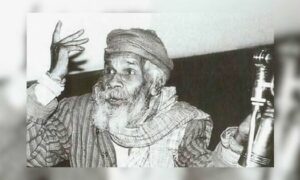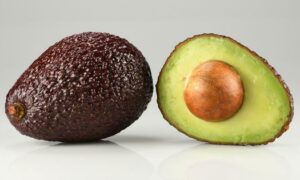The 2012 anthology, Stories of Motherhood, edited by Diana Secker Tesdell, opens with a most extraordinary story. “Blood and Its Relationship to Water” (1987) by Ron Carlson overturns the three most sacred tenets of motherhood – the birth, the female body, and a woman’s divine transformation into Mother. The story, at first, centred around a woman’s instinctual devotion for the (adopted) baby, takes a shocking turn when the father steps into the mother’s role one night, offering to feed and clean the baby, while she catches up on her much-needed sleep. In the dark hours of the night, the father initiates himself into motherhood, aided by the baby’s skin, piss, and blood. Unlike any “motherhood” story I have read before, this remained my favourite till the end.
Comfortably settled in by the time I finished reading the story and my excitement about the other stories already piqued, I was glad to find that the rest of the book lived up to, and exceeded, my expectations.
The mother and the child
Being a mother is a complicated affair – there are moments of joy, but there are also long hours of anxiety and despair, there is fear of failing, of knowing you have failed, long years of grieving, for the self and the child. Tesdell’s selections for the anthology reflect the wide-ranging, ever-changing, overwhelming bigness of motherhood: not only for the mother but also her children, who must navigate this lifelong association.
In “What You Learn About the Baby” by Lydia Davis and “Laura” by Harold Brodkey, we witness the early days of motherhood. Davis’s mother observes her baby in wonder and curiosity, still getting accustomed to it, while Brodkey’s Laura, overwhelmed by the constant attention her newborn demands, ponders if she has it in her to be a mother. Nervous and exhausted, she cannot trust her maternal instincts or intelligence – what if she’s got it all wrong? Alice Munro’s “My Mother’s Dream” tactfully brings up what is still taboo – postpartum depression and a mother’s yearning for her former self. Set in wartime, the baby watches her mother struggle with grief as she mourns her dead husband and also the baby, who has rejected her for other maternal figures.
Tillie Olsen’s “I Stand Here Ironing” and Elizabeth Bowen’s “Coming Home” examine yet another taboo – a mother’s guilt. The mother in Olsen’s story goes about her day, busying herself with mundane tasks, while her daughter lies sick. Suffering from asthma, she rues all the times she had neglected her child, was not fully present but in the end, she assures herself that her daughter is tough and will not succumb so easily. Bowen’s story has a modern resonance. A child, done with school, returns home teary-eyed knowing that her mother won’t be there to welcome her – she’s at work, and till they are reunited in the evening, both mother and child spend anxious hours wondering about the other’s safety.
“The Sky is Gray” by Ernest J Gaines is a gut-punch of a story. Set in the segregated South, a young boy and his mother make a journey to the dentist in the dead of winter to remove his rotten tooth. On the way, they are subjected to racist attacks and treated unfairly. The boy, hungry and cold, decides to forego lunch to spare embarrassing his mother, who is strapped for cash – a tooth extraction is about the only luxury they can afford. After a long and harrowing day, a stranger’s ordinary act of kindness transforms the boy.
Barbara Kingsolver’s “Islands on the Moon” is yet another stunning story of mother and daughter, ill-adjusted in their roles, finding a common ground in sisterhood when they find themselves pregnant at the same time. After decades of friction and inability to empathise with the other, it takes a second chance at motherhood for both to finally bury their differences and accept their reality for what it was – two very young women who alternated as mother and daughter, neither prepared to be the carer.
Is a mother’s love truly unconditional, blind to the failures of her child? “The Burglar’s Christmas” by Willa Cather is a funny story about a mother coming to terms with the fact that her son is a professional burglar. During Christmas, famously the day of Mary and her magnanimous son, this revelation assumes a particularly tragi-comic shape. In “Mother” by Sherwood Anderson, a mother wishes desperately for her son to wisen up to the ways of the world, and she is relieved when he finally leaves her protective embrace to set out on his own. In both stories, the mother grapples with the very real possibility of their children disappointing them and also dreads the prospect of prolonged caregiving if their children were to fail to mature into true adults.
The child and the mother
The immigrant mother takes the centrestage in two wonderful stories: Amy Tan’s “Two Kinds” and Anita Desai’s “Winterscape.” In “Two Kinds”, a young Chinese girl is burdened with her mother’s pressure to be a “prodigy”, to excel in some art form or academics, in order to achieve the American Dream that they have been promised. Sorely untalented, the daughter and mother exist in years of quiet hostility. The daughter is terrified to learn that her mother has abandoned all hope, while the mother resigns to the daughter’s indifference to her wishes. The son in Anita Desai’s “Winterscape” has two mothers – the woman who birthed him and his aunt. Between the two, he has grown up in abundant love. When he migrates to Canada and marries a Canadian woman, she makes it known that neither is welcome to stay for long. Torn between primordial love and his duty towards his pregnant wife, the son is racked with guilt as he struggles to make a place for his mother and aunt in his new life. Stuck between two worlds, the son wonders if he has betrayed the ones who truly love him the most for a life of superficial comfort.
Colm Tóibín’s “One Minus One” and Hortense Calisher’s “The Middle Drawer” ruminate on the finality of death. With the mother dead and childhood long gone, the narrator in both stories takes stock of their altered reality. Regret, grief, and missed moments have piled up – how do you tell your mother, one last time, you love her?
“Marzipan” by Aimee Bender and “The Leap” by Louise Erdrich treat motherhood like an almost fantastical thing, with the mother acquiring superhuman qualities. In “Marzipan”, much to her delight, a young girl’s mother gives birth to her grandmother. The mother, not expecting her mother to reincarnate as her old self so soon, bubbles with resentment for her mother for taking over her life, yet again. In “The Leap”, a daughter recounts the several times her mother saved her from death’s jaws with her strength and presence of mind while she was pregnant with her – a superglue love that transcends her existence.
The anthology concludes with Laurie Moore’s “How To Talk To Your Mother (Notes),” where a daughter jots down all the things she and her mother spoke about over five decades. From 1939 till her mother died in 1982, the daughter reflects on the spats and arguments, declarations of love, lies and excuses that they exchanged as big historical events occurred in the background. Upon retrospection, she agrees that no one loved her like her mother.
“I look at my mama and I know what she’s thinking. I been with mama so much, just me and her, I know what she’s thinking all the time.”
— ‘The Sky is Gray’ by Ernest J Gaines.
So does mama. So does mama.
Stories of Motherhood, edited by Diana Secker Tesdell, Everyman’s Library Pocket Classics.
This article first appeared on Scroll.in
📰 Crime Today News is proudly sponsored by DRYFRUIT & CO – A Brand by eFabby Global LLC
Design & Developed by Yes Mom Hosting






